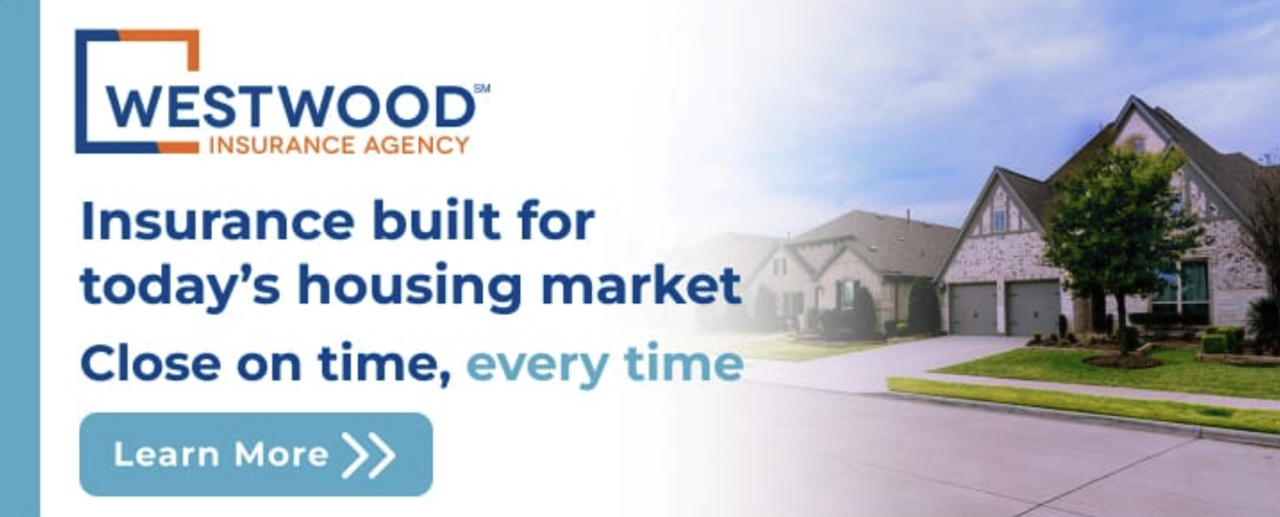Leadership
Climate Risk Is Reshaping The New Home Buyers Landscape
Helping Builders and Buyers Navigate High-Exposure Markets

Amid shifting weather patterns, economic pressures, and insurance industry constraints, the homebuilding business has grown – leaps and bounds – more complex.
In high-risk states like California, Florida, and Texas, natural disasters such as wildfires, hurricanes, and floods have intensified in frequency and severity, leading to skyrocketing premiums and fewer insurance options for homeowners. Here, we explore how homebuilders can respond to the climate-driven insurance landscape by offering integrated, stable solutions to support new-home buyers in high-exposure markets.
With expert insights from Westwood Insurance Agency’s Gabriel Salazar and data firm Core Logic, we unpack how innovative insurance practices can help builders keep projects viable while assuring buyers their investments are protected.

Navigating a Hard Market
Homebuilders in high-risk regions face significant challenges securing insurance coverage for buyers, which can impact the smooth closure of home sales. Gabriel Salazar, Vice President of Agency Support Services at Westwood Insurance Agency, describes today’s climate as a “hard insurance market,” where insurers are growing increasingly selective, especially in areas prone to natural disasters.
This reluctance is driven by increasing claims and reinsurance costs, which compound the already high risks associated with wildfire, flood, and hurricane exposure. Salazar notes that finding insurers willing to underwrite these high-risk policies requires a proactive, extensive network.
We’re dealing with a lot of insurers not wanting to write new business…especially in high-risk areas like California," says Salazar. "What we're doing is networking with other insurance companies that are still open to writing, ensuring that even in wildfire zones, we have options available."
This effort to maintain insurance availability is particularly important for builders, as it helps mitigate risks associated with delayed closings due to insurance issues. Salazar emphasizes that Westwood’s integrated approach allows them to issue policies on the same day, reducing the chances of a bottleneck in the home-buying process.
We have a same-day turnaround for issuing policies to make sure we don’t ever hold up a home closing. This is due to our integration with insurance companies open to new business and our ability to continually find new options as needed," he explains.
The E&S Market: A Safety Net for Challenging Markets
With major insurers exiting high-risk areas or significantly raising premiums, buyers and builders increasingly turn to the Excess and Surplus (E&S) insurance market. Unlike traditional insurers, E&S providers operate under a different regulatory framework, allowing them to offer customized, flexible policies tailored to unique and challenging risks. This flexibility is critical for builders and buyers in wildfire-prone or flood-prone areas, where standard policies may be unavailable.
The E&S market is available to homebuyers when they cannot obtain coverage in the traditional insurance marketplace, typically because the risk is too high," Salazar explains.
This alternative market provides essential coverage options but often comes at a higher cost, as policies are structured around specific risks rather than broad coverage. Salazar’s team works closely with E&S carriers to ensure that homebuyers have options, particularly in high-risk regions where insurers have traditionally been reluctant to operate.
Insights from CoreLogic: Climate and Market Pressures
Data from CoreLogic’s senior principal economist Molly Boesel underscores the broader impacts of climate risks on the housing market. Boesel notes that migration patterns indicate an increase in populations moving to areas with higher climate risk, such as wildfire zones and hurricane-exposed regions. As a result, property values may not fully reflect the high insurance costs that these risks entail, making it crucial for homebuyers to factor in potential increases in insurance premiums.
We’ve seen people moving into high wildfire risk areas, with those populations doubling in the last two decades. Insurance costs are increasing but often fail to capture the full risk, especially in heavily regulated markets where rates can’t easily rise," Boesel points out.
CoreLogic’s analysis highlights the growing disparity between actual climate risks and insurance premiums, with some regions seeing rate spikes and others facing limited access to coverage altogether. This uneven landscape adds a new dimension to housing affordability, as buyers must now weigh insurance costs alongside mortgage payments, taxes, and other homeownership expenses.
Maiclaire Bolton Smith, VP of Hazard and Risk Management at CoreLogic, adds that the increase in natural catastrophes will likely continue driving up premiums, potentially squeezing out middle-income buyers in some regions. For homebuilders, these changes in affordability and accessibility could translate to shrinking demand, especially if buyers can’t secure affordable insurance.
It’s not just the mortgage anymore," Bolton Smith remarks. "Insurance has become a key factor in affordability, and the market needs to adjust to the reality that more frequent, severe weather events are here to stay."
Proactive Risk Assessment and Data-Driven Decisions
Recognizing the importance of preparedness, Westwood supports builders by providing detailed risk data for prospective properties, including flood zones and FireLine scores. This information empowers builders to make informed decisions about land acquisitions, enabling them to anticipate and mitigate risks that could impact the viability of their projects. By equipping builders with localized climate and risk data, Westwood aims to streamline the planning process and safeguard developments against future insurance-related disruptions.
We can provide flood zone data and FireLine scores for specific parcels," Salazar explains. "This helps builders understand the risk profile of their investments before development begins, ensuring they’re fully aware of potential challenges."
This proactive approach is invaluable in areas prone to climate-related events, where knowing the risk of flooding or proximity to wildfire-prone vegetation can influence development choices. By integrating these insights into the planning stages, builders can adjust designs or prepare for additional costs, reducing the likelihood of unexpected delays or expenses during the building process.
Ensuring Buyer Confidence with Reliable Coverage
For homebuyers, confidence in the security of their investment is paramount. Rising premiums and limited insurance options in high-risk areas could potentially deter prospective buyers, even as demand for housing remains high. To counteract this hesitancy, Westwood has established agency standards for coverage that help ensure buyers are protected, despite the climate-related risks their property may face.
Our goal is to ensure buyers are made whole in the event of a total loss, providing the protection and peace of mind they need," says Salazar.
Westwood’s commitment to comprehensive coverage can help buyers in high-risk markets secure policies that cover full replacement costs, minimizing financial exposure in case of a catastrophic event. This approach not only safeguards homeowners but also reinforces builder reputation by aligning with buyers' expectations of reliability and thorough protection.
Building Resilience and Stability in Uncertain Markets
As the insurance landscape continues to evolve in response to climate pressures, homebuilders have an opportunity to enhance their market resilience by partnering with insurance agencies that can offer consistent, reliable solutions. By working with companies like Westwood that are equipped to navigate the complexities of the E&S market and provide timely, integrated policies, builders can keep projects on track and meet buyer expectations even in the most challenging conditions.
Salazar emphasizes that in today’s unpredictable environment, builders and buyers alike benefit from a foundation of security and trust, rooted in Westwood’s relationships with financially stable, high-quality insurance providers.
We work with top-rated insurance companies and prioritize comprehensive policies," he says. "This means our clients—both builders and buyers—can feel assured that we’re providing reliable, long-term solutions."
For homebuilding, residential development, and residential investment strategists, adapting to climate risks will likely be one of the defining challenges of the coming years.
As CoreLogic’s Boesel and Bolton Smith highlight, the impact of these climate-driven pressures extends beyond the insurance market, affecting housing affordability, development decisions, and ultimately, the broader landscape of homeownership.
By integrating insurance solutions as a central part of the home-buying journey, builders can reinforce buyer confidence and continue to thrive, even in the face of climate-driven uncertainty.
MORE IN Leadership
10 Bold Ideas Tackling Housing Affordability And Access Now
From AI to hempcrete, these 10 ideas show how innovation in design, finance, and policy can open the door to housing affordability.
Sumitomo Forestry Sharpens U.S. Focus With DRB Move
Strategic clarity replaces portfolio sprawl as Sumitomo bets big on U.S. scale and integration.
Homebuilders and Insurance: A New-Reality Cost To Stay Ahead
Exclusive insights from Westwood Insurance Agency’s Alan Umaly and MSI’s Naimish Patel reveal why homebuilders must rethink insurance, resilience, and risk management—or risk losing buyers in an increasingly volatile market.


